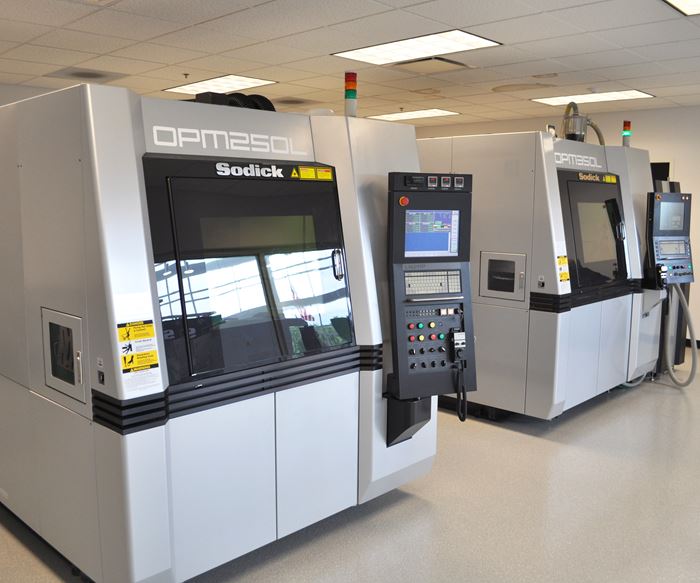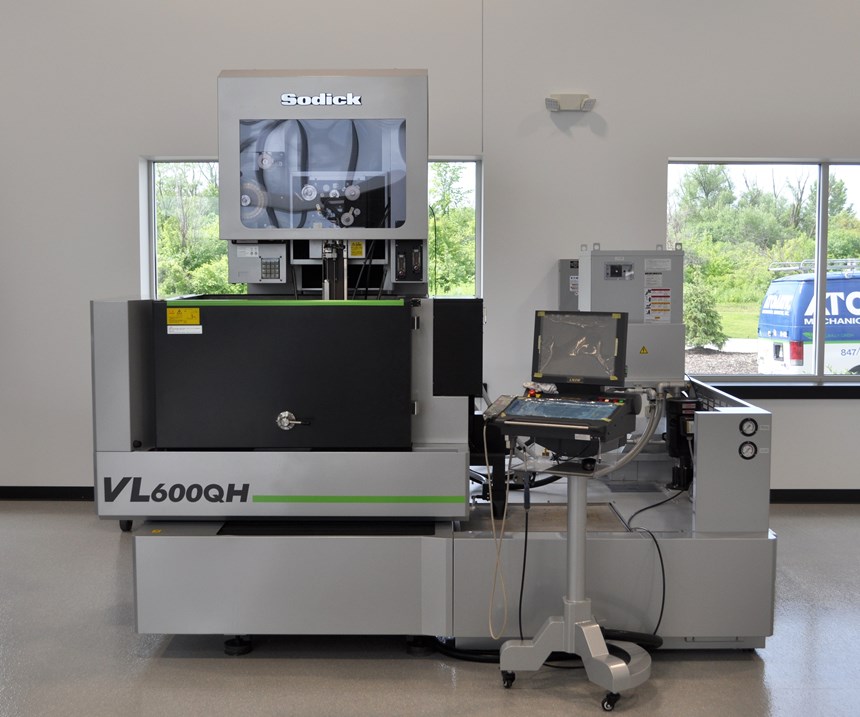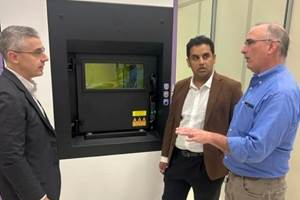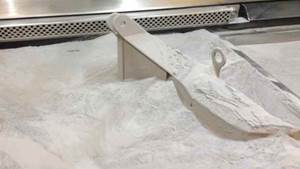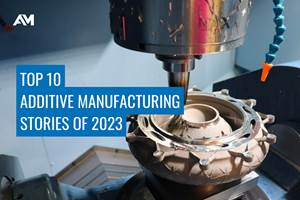At a Grand Opening, Sodick Reveals More Than New Machines
Along with launching a new line of hybrid machines, the world’s largest EDM manufacturer is tailoring one of its models specifically for postprocessing additive parts.
Sodick’s grand opening for its new North American headquarters in Schaumburg, Illinois, offered ceremonial flourishes fitting for a company rooted in Japan that regards its cultural traditions. After the event opened with remarks from Sodick Inc. president Yuji Akutsu and a ribbon-cutting ceremony with the city’s mayor, spirits were lifted by a traditional sake ceremony (kagami-biraki) that commenced with the wallop of a wooden mallet upon the sake barrel’s lid.
For Sodick, there was plenty of reason to celebrate. The company’s new North American headquarters is impressively modern, a 40,000-square-foot building decked out in its signature white and green with plenty of natural light shining on a $5 million inventory of spare parts. But out of view was something just as important to Sodick: a new strategy that melds the company’s core business—EDM—with its growing investment in additive and hybrid technologies.
The highlight of the grand opening itself may have been the company’s new additive technology center and the two machines housed within it: the OPM250L and the OPM350L hybrid metal 3D printers. At the very least, these machines represent an acknowledgement of additive and hybrid manufacturing’s rising significance to Sodick—a company so dedicated to EDM that it produces more than 80 percent of its machine parts in-house across three countries.
Clearly, EDM and metal AM have been complementary technologies for years, especially wire EDM’s application for cutting AM parts away from build plates. That hasn’t gone unnoticed by this manufacturer of EDM equipment, which launched its first hybrid metal AM printer, the OPM250L, two years ago at IMTS. The direct metal laser sintering (DMLS) powder bed printer combines a 500-W ytterbium laser with a 45,000-rpm linear motor spindle, which can perform milling operations during pauses in the printing process that allow access to internal features that otherwise would be inaccessible when the part is finished.
Since the OPM250L’s launch nearly two years ago, Sodick has focused on technology and capacity upgrades to its OPM hybrid product line. Last year, the company introduced its parallel mode technology, which optimized the machine’s 500-W laser path by allowing it to target four points simultaneously within a build. All programming takes place offline on Sodick’s dedicated CAM software that controls both sintering and three-axis milling operations, including tool changes. If a tool breaks or the part becomes out of a specified tolerance during a milling operation, the software detects those conditions and instructs the machine to replace the broken tool with a sister tool for remachining.
Since the OPM250L’s launch, the OPM line has expanded to include the OPM350L, a larger capacity hybrid machine that includes Sodick’s materials recovery system (MRS) unit. This system, which comes standard with the OPM350L and is available as an option for the OPM250L, automatically delivers powder into the OPM’s material feeder for use in the additive manufacturing process. As excess powder is delivered to the OPM’s powder receptacle, the MRS unit conveys this material back for sieving and return to the OPM material feeder. By continually recycling powder, Sodick says that the MRS unit allows the OPM to run continuously for up to a week using just 30 kg of material.
But Sodick’s ongoing commitment to additive manufacturing via the OPM line doesn’t mean the company is any less committed to its core business. At the North American headquarters’ grand opening, the company also unveiled two EDM models out on the main floor, the ALN800G wire EDM, which the company says is the world’s largest drop-tank EDM model, and the VL6000QH wire EDM, a high-column economy EDM specifically targeted at the additive industry.
Evan Syverson, Sodick’s additive business development manager, told me that Sodick’s ability to serve postprocessing needs for additive is a key business strategy for the company moving forward. “As additive companies keep expanding the capacity of their DMLS machines, users must also make sure that their postprocessing equipment is keeping pace,” he says. Because of that, the demands of additive applications are a bit different than most EDM work. Baseplate and support cutoff doesn’t necessarily require the extreme precision that an EDM can excel in. What it does require, however, is a tall Z axis that can accommodate the ever-growing size of 3D printer base plates.
Syverson added that a high column typically demands investment in a advanced wire EDM model. Thus, there is a significant cost to end-users who are not only paying for a high-column option, but who are also paying for many capabilities not actually needed in processing AM parts. Which is why Sodick is marketing the VL600QH as an economy high-column EDM—a trend likely to continue as machine tool builders recognize the unique postprocessing needs that additive parts require.
Editor’s Note: All of the machines mentioned above will be on display at IMTS 2018 in Sodick’s booth, located in the East Building, Level 3, Booth 134802.
Related Content
New Zeda Additive Manufacturing Factory in Ohio Will Serve Medical, Military and Aerospace Production
Site providing laser powder bed fusion as well as machining and other postprocessing will open in late 2023, and will employ over 100. Chief technology officer Greg Morris sees economic and personnel advantages of serving different markets from a single AM facility.
Read MoreDMG MORI: Build Plate “Pucks” Cut Postprocessing Time by 80%
For spinal implants and other small 3D printed parts made through laser powder bed fusion, separate clampable units resting within the build plate provide for easy transfer to a CNC lathe.
Read MorePostprocessing Steps and Costs for Metal 3D Printing
When your metal part is done 3D printing, you just pull it out of the machine and start using it, right? Not exactly.
Read MoreTop 10 Additive Manufacturing Stories of 2023
Laser powder bed fusion, proprietary AM processes, machining and more made our list of top 10 articles and videos by pageviews this year.
Read MoreRead Next
Profilometry-Based Indentation Plastometry (PIP) as an Alternative to Standard Tensile Testing
UK-based Plastometrex offers a benchtop testing device utilizing PIP to quickly and easily analyze the yield strength, tensile strength and uniform elongation of samples and even printed parts. The solution is particularly useful for additive manufacturing.
Read MoreAlquist 3D Looks Toward a Carbon-Sequestering Future with 3D Printed Infrastructure
The Colorado startup aims to reduce the carbon footprint of new buildings, homes and city infrastructure with robotic 3D printing and a specialized geopolymer material.
Read More3D Printed Polymer EOAT Increases Safety of Cobots
Contract manufacturer Anubis 3D applies polymer 3D printing processes to manufacture cobot tooling that is lightweight, smooth and safer for human interaction.
Read More

